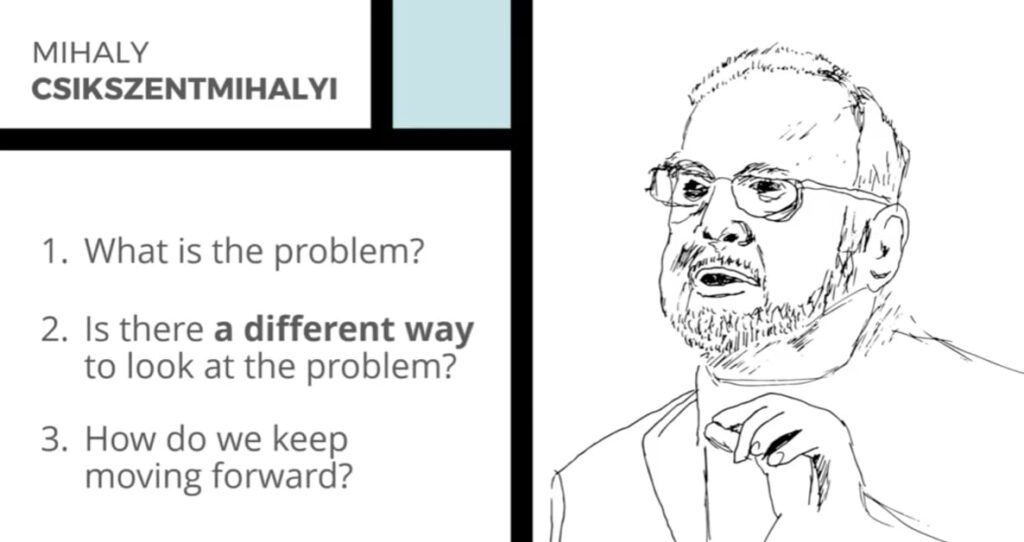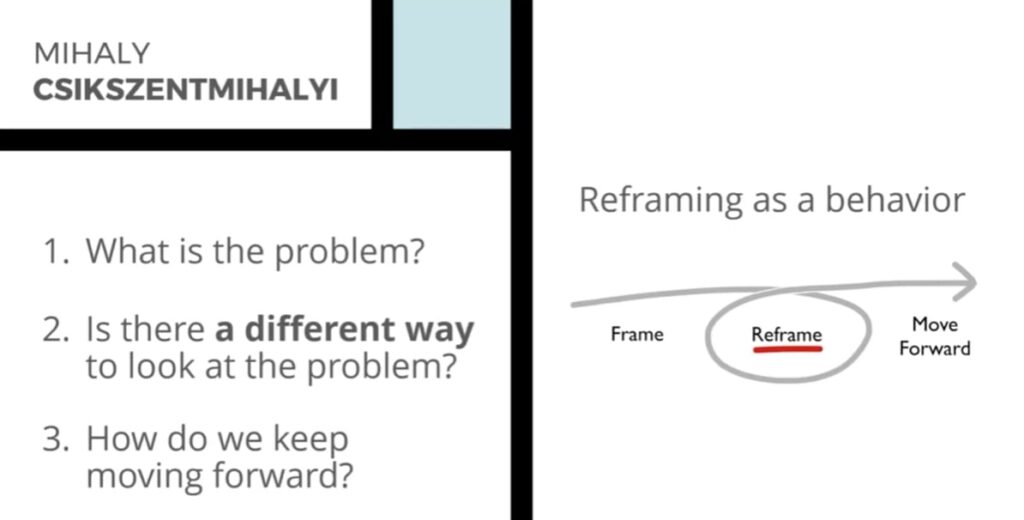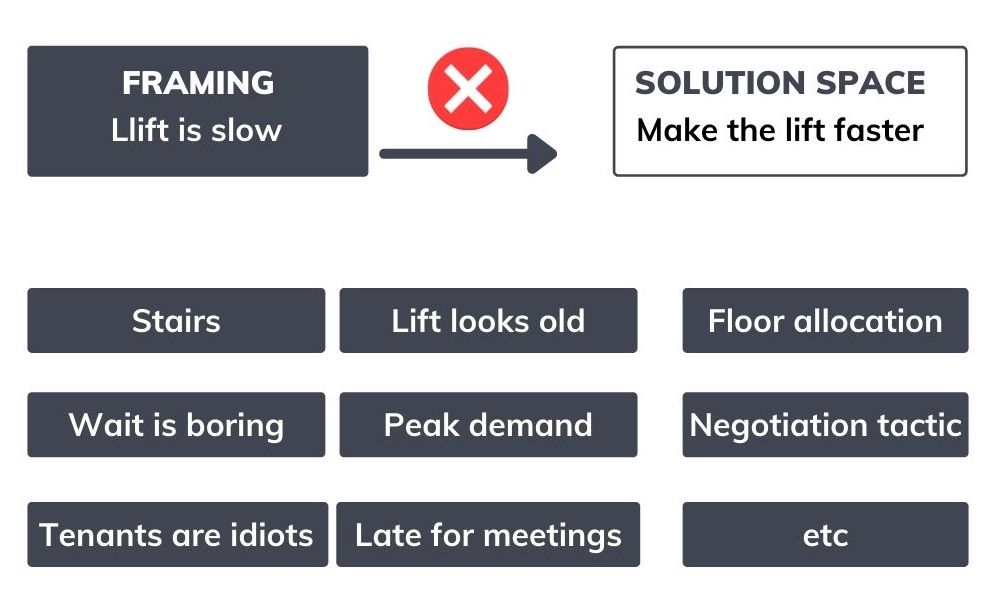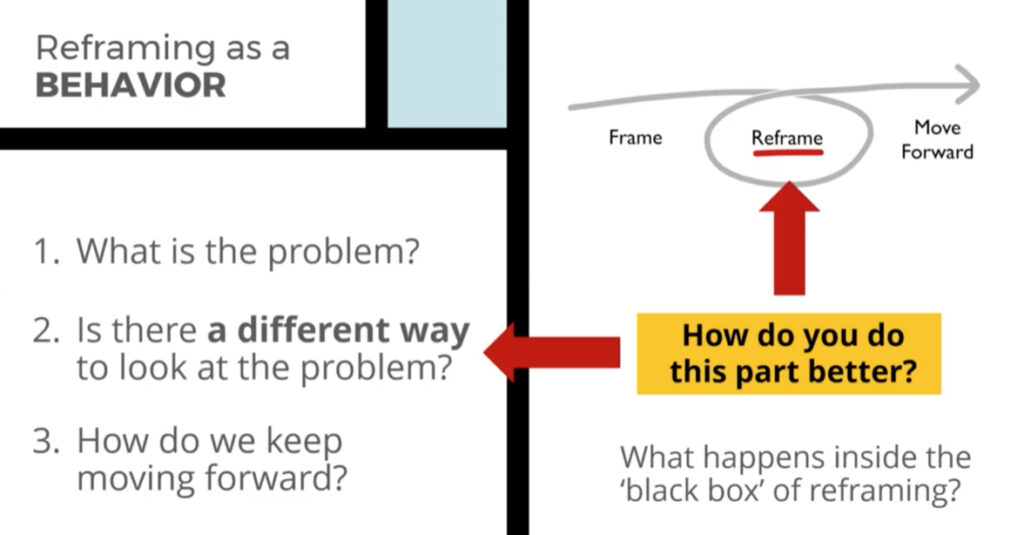reframing the problem
Whenever you have a problem, you very rapidly describe the problem.
The issue is that the elevator is slow, tenants are complaining, and you know, we might lose our tenants.
People make a mistake because they look at the slow lift and never even question whether that is the correct framing. They just spent all their time figuring out the solution but not necessarily looking for the real problem, which we usually talk about; you might be looking for a better problem to solve. And that’s important because most of our problems don’t have just one cause or one like root issue that’s going on. Most of the problems we face are multi-dimensional, multi-causal, which means this is good news because there may be multiple different ways of trying to solve them. And if you talk to building managers, well, many of them will suggest a solution to another problem we saw you mentioned, they put up mirrors in the hallway.
So what happens is, you know, put up a mirror, people arrived, and I know I’m busy, I’m busy, but I look up myself in the mirror, and the time passes by.
The mirror is not necessarily the solution to this; the mirror might not work if the issue is that people are late for an important meeting. But the mirror is a memorable example of the key idea that sometimes, by trying to reframe the problem, you can find a problem or a different problem that is much better, faster, cheaper, more effective, and safer to attack than the problem you originally started with.
Or even more important, Emotional pain.
or ...
- Increasing the frequency of maintenance checks and maintenance checks suggests there’s an issue here with the maintenance schedule; what’s going on in that room?
- How might we make the slow elevator ride more fun, exciting, engaging? So, like there’s somebody here who focus on the experience of the ride?
- Why is it slow? Although we’re also looking into the question of like, what’s creating these loads?
- Finding out why the tenants are dissatisfied. Problems will focus on not on the elevator but asking what’s going on with the dissatisfaction? Why are people unhappy? Why haven’t they been unhappy earlier? But something changes?
- Hours of the building may dictate when everyone is getting to the elevators. The timing, right? Is this an issue of peak demand where everybody has lunch at noon, and that’s when the crunch happens?
- People are bored in the lift is there’s nothing to look at boredom, pure boredom, again, around round the experience.





